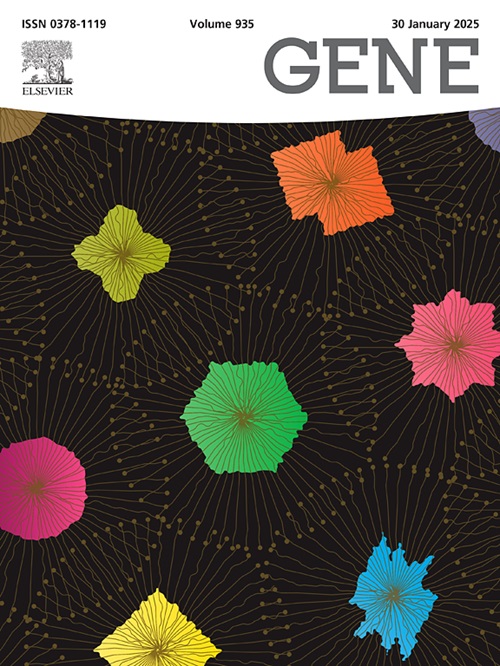Transcriptomic analysis of key genes and signaling pathways in sepsis-associated intestinal mucosal barrier damage
IF 2.6
3区 生物学
Q2 GENETICS & HEREDITY
引用次数: 0
Abstract
Objectives
The aim is to analyze differentially expressed genes (DEGs) in mice with sepsis-related intestinal mucosal barrier damage and to explore the diagnostic and protective mechanisms of this condition at the transcriptome level.
Methods
Small intestinal tissues from healthy male C57BL/6J mice subjected to Cecal ligation and puncture (CLP) and sham operation were collected. High-throughput sequencing was performed using the paired-end sequencing mode of the Illumina HiSeq platform. Gene ontology (GO) and Kyoto Encyclopedia of Genes and Genomes (KEGG) analyses were conducted on the differentially expressed genes (DEGs). A protein–protein interaction (PPI) network was constructed using the STRING database, and hub genes were identified with Cytoscape. These hub genes were then validated using quantitative real-time polymerase chain reaction (RT-qPCR).
Results
A total of 239 DEGs were identified, with 49 upregulated and 130 downregulated genes. KEGG enrichment analysis showed that these DEGs were primarily involved in cytokine-cytokine receptor interaction, Th1 and Th2 cell differentiation, viral protein interactions with cytokines and their receptors, and the IL-17 signaling pathway. The top 10 hub genes were selected using the cytoHubba plugin. Experimental validation confirmed that the expression levels of TBX21, CSF3, IL-6, CXCR3, and CXCL9 matched the sequencing results.
Conclusion
TBX21, CSF3, IL-6,CXCR3, and CXCL9 may be potential biological markers for the diagnosis and treatment the sepsis-associated intestinal mucosal barrier.
脓毒症相关肠黏膜屏障损伤关键基因和信号通路的转录组学分析。
目的:分析脓毒症相关肠黏膜屏障损伤小鼠的差异表达基因(DEGs),并从转录组水平探讨其诊断和保护机制。方法:收集经盲肠结扎穿刺(CLP)和假手术治疗的健康雄性C57BL/6J小鼠小肠组织。采用Illumina HiSeq平台的对端测序模式进行高通量测序。对差异表达基因(DEGs)进行基因本体(GO)和京都基因与基因组百科全书(KEGG)分析。利用STRING数据库构建蛋白-蛋白相互作用(PPI)网络,并利用Cytoscape对枢纽基因进行鉴定。然后使用实时定量聚合酶链反应(RT-qPCR)验证这些中心基因。结果:共鉴定出239个deg,其中上调基因49个,下调基因130个。KEGG富集分析表明,这些deg主要参与细胞因子-细胞因子受体相互作用、Th1和Th2细胞分化、病毒蛋白与细胞因子及其受体的相互作用以及IL-17信号通路。使用cytoHubba插件选择前10个枢纽基因。实验验证TBX21、CSF3、IL-6、CXCR3、CXCL9的表达水平与测序结果相符。结论:TBX21、CSF3、IL-6、CXCR3、CXCL9可能是诊断和治疗脓毒症相关肠黏膜屏障的潜在生物学标志物。
本文章由计算机程序翻译,如有差异,请以英文原文为准。
求助全文
约1分钟内获得全文
求助全文
来源期刊

Gene
生物-遗传学
CiteScore
6.10
自引率
2.90%
发文量
718
审稿时长
42 days
期刊介绍:
Gene publishes papers that focus on the regulation, expression, function and evolution of genes in all biological contexts, including all prokaryotic and eukaryotic organisms, as well as viruses.
 求助内容:
求助内容: 应助结果提醒方式:
应助结果提醒方式:


